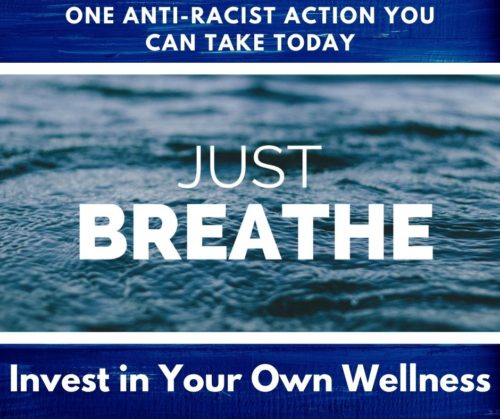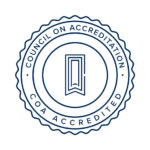One Anti-Racist Action to Take Today: Invest in Your Own Wellness

By Sara McCabe
Vice President of Campus Services
We’ve all had the experience of being told to “calm down” or “just relax” or we’ve given that directive to someone else during times of high stress. Telling someone to calm down when they are overwhelmed and anxious is like telling someone with stage fright to perform in front of a 1,000 people. It’s not even close to helpful.One of the most popular things we hear, especially now during COVID, is that we need to take time for self-care and wellness. We purchase everything from acupuncture, to gym/yoga memberships, spa treatments, getaway retreats and more. As a society we’ve created a $10 billion self-care industry. Are these effective wellness tools? Maybe for some people. Are they inclusive and accessible for all? Nope.
One of the reasons that self-care has become something to purchase rather than do is because the definition of self-care is misunderstood. Self-care is a verb; it’s about taking an action. Wellness is a noun; it is a state of existence. We engage in self-care to achieve greater wellness.
Here’s the other significant difference, wellness, like happiness, is NOT something that can be bought. Wellness and happiness come from within. Wellness is accessible to all while self-care is often expensive and accessible only to those with a ton of disposable income.

In a perfect world, yoga studios, spas, therapy and retreat centers, would be inclusive and free of charge as part of our overall health. However, as a yoga instructor and social worker, I take issue with the “wellness industry” because it comes with a monetary cost. Once that happens, it becomes exclusive, accessible to some, but not all. I think this is worth repeating: Wellness cannot be purchased.
Now that we’ve talked about what wellness isn’t, let talk about what it is, in its simplest form. Breathing.
Yes, it is that basic.
Breathing is an action that we are unconsciously doing every moment of every day. Unconscious breathing, the kind that keeps us alive. I’m talking about another kind of breathing that is intentional and conscious and is an act of self-care. It’s called Pranayama and it’s at the core of yoga practice.
When we experience anxiety and fear it results in physical symptoms such as increased heart rate, shaking, nausea, headaches and more. We also experience emotional symptoms such as difficulty with focus, anger, sadness, nervousness and increased worry. Pranayama is the act of connecting your physical body and your emotional body in order to achieve balance and a state of calm.
In case you don’t believe me that breathing can calm our minds and bodies, consider the science behind this. When you take a deep inhale, you increase your heart rate which warms the body. When you slowly exhale, you decrease the heart rate and cool the body. We can take an active role in controlling our physical and emotional body and getting ourselves to a place of calm through intentional breathing.
As humans, we are good at bringing our heart rate up (deep inhale) and we have more difficulty with bringing the heart rate down (slow exhale). This is especially true in times of stress. When fear and anxiety activate your stress response, as a counter, really focus on slowing down your exhale in order to activate the calming response. Like any coping skill, the more we practice the techniques the more accessible they are when we are experiencing stress.
There are many different ways you can use breathing techniques to impact your physical and emotional bodies. Click on the links to learn more about the power of breathwork and practice a few.
Alternate nostril breathing can increase, decrease, or synergize our energy levels.
Breath of Fire breathing will clear out your lungs and nasal passages
Morning Breathing techniques will increase energy levels and help with focus and concentration
Lymphatic system breathing (video/podcast) helps to remove toxins and boost immunity
Many of these techniques can be done anywhere and anytime. They require no equipment, costs or special settings. They only require an open mind and practice.
Wellness starts with breathing. It really is that simple.

